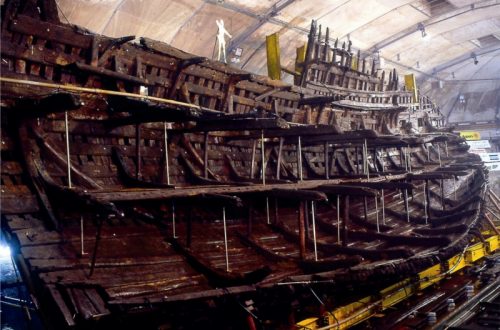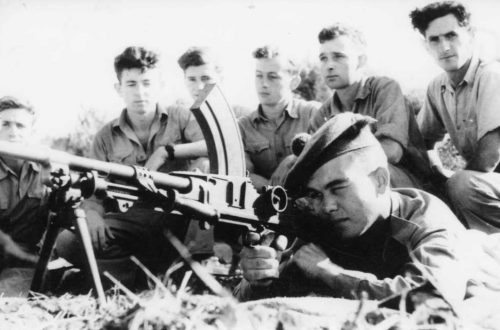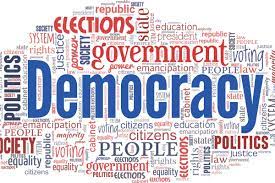“We’re not paying the poll tax,
We’re not paying the poll tax,
Nah, nah, nah, nah!
Nah, nah, nah, nah!”
Repeat ad nauseam.
In a few days time it will be the twentieth anniversary of this event:
Bloody battle of Trafalgar
Richard Caseby, Maurice Chittenden, Frances Rafferty and Tim Rayment
The Sunday Times, April 1, 1990, Sunday
GANGS of rioters and looters were rampaging across London’s West End last night after Britain’s biggest anti-poll tax rally erupted into violence.
Police lost control after what had been a peaceful protest degenerated into an evening of chaos. At least 132 people were hurt and 341 arrested.
Fifty-seven police and 75 demonstrators were taken to hospital, including two young protesters with serious head injuries. They were critically ill last night. Four officers were seriously injured and 20 police horses were hurt.
By 7pm, roads leading from the rally in Trafalgar Square featured fires, overturned police vans, burnt-out cars and widespread looting. The breaking of shop windows and overturning of cars extended to Tottenham Court Road, Covent Garden and Soho. In Regent Street alone, the windows of 40 shops were smashed.
Police and march organisers last night blamed the violence on anarchists and other extremist political groups….
[P]olice failed to stop extremists taking over scaffolding on an office building overlooking Trafalgar Square. Some of the worst injuries came as demonstrators hurled down a hail of missiles, including bricks, iron poles and a fire extinguisher. A contractors’ cabin on the scaffolding was set alight.
Police on horseback and in full riot gear spent an hour flushing rioters out of the building and Trafalgar Square. But the mobs in the square were split into roving gangs which fanned out into the surrounding areas of the West End terrorising people arriving for a night out.
A cashier at the Duke of York theatre in St Martin’s Lane was hurt by flying glass as rioters smashed a dozen windows. Andy Phipps, the general manager, barricaded the doors as the mob began setting light to luxury cars outside…..
The violence began soon after 4pm, minutes after the event’s organisers had spoken of their pleasure that the demonstration was so peaceful.
It started as mounted police tried to clear a small crowd, some sitting in the road, near the new gates of Downing Street. Police, hemmed in against shop fronts by demonstrators, were forced to withdraw, but regrouped and charged back into the crowd.
The trouble spread into Trafalgar Square, where rioters had already taken control of the scaffolding around the former Grand Hotel. They set fire to workmen’s huts and a thick cloud of black smoke drifted over Nelson’s column…..
Keith Parnell of the Mail on Sunday … said the police line broke under a hail of bottles, bits of wood, scaffolding and smoke bombs: “They started retreating down Whitehall. They were getting hit all the time. People were punching and kicking them as well as throwing missiles. The mob was really frenzied and they were getting the better of the police.
“Then these vans pulled up and the 25s (riot police), the guys in boilersuits and helmets, broke out. They just charged headlong at the crowd, hitting people. I was between them and the crowd. I fell over a barrier and as I was getting up I saw this policeman coming at me. I heard him say ‘you’ll do’ and then he hit me with his baton.
“I put my arm up and he hit my forearm. Then the policeman started hitting the bloke behind me. It was terrible. The mob was just running wild, smashing windows.
“I saw children there. People were cowering over them to protect them. The police had lost control.”
The police, in groups 400 strong, charged in an attempt to divide the crowds and drive them off the square. By 5.40pm, the trouble switched to the north of the square as police began clearing protesters who had taken refuge on the steps and in the crypt of St Martin-in-the-Fields.
Labour MP George Galloway … said … “these lunatics, anarchists and other extremists, principally from the Socialist Workers’ party, were out for a rumble the whole time, and now they’ve got it. If they didn’t exist, the Tories would need to invent them.”
As thousands of people travelled into town for what they thought would be an ordinary Saturday night, the violence spread.
Outside the Albery Theatre in Northumberland Avenue more than 12 cars, including an almost new Daimler Sovereign, had been attacked, their windows smashed and bodies dented.
As the last of the demonstrators dispersed from Trafalgar Square, a number started to break windows of the Barclays bank building on Pall Mall East. Rioters continued down Haymarket, smashing more windows, including the front of McDonald’s.
When they had almost reached Piccadilly Circus, police in riot gear charged the length of Haymarket, pushing them into theatregoers and tourists.
Heavy bins were then hurled into the road, more shop fronts were smashed and missiles thrown at police.
Elsewhere, rioters overturned cars and smashed shopfronts as they retreated up Charing Cross Road and St Martin’s Lane. Firemen were for a time unable to reach a car that had been torched by violent protesters in St Martin’s Lane….
[Emphasis added]
The countdown to mayhem
Maurice Chittenden and Ian Birrell
The Sunday Times, April 1, 1990, Sunday
….At noon demonstrators from all over England began gathering on the lawns of Kennington Park in south London. They came by 650 coaches, a special ”poll tax express” train, Tube and on foot…..
3pm: The mood was still peaceful as Labour MPs Tony Benn and George Galloway spoke in Trafalgar Square. But a large mob was gathering outside Downing Street, throwing the occasional bottle and beer can at police and refusing to move.
4pm: Scotland Yard still estimated that the crowd was only 30,000, but organisers claimed 200,000 people were pouring into Trafalgar Square.
4.10pm: The flashpoint. Mounted police appeared from beside government buildings to form a wedge across Whitehall. This blocked people at the tail end of the march from reaching Trafalgar Square as the police forces in front tried to move the crowd away from Downing Street to the Square.
4.20pm: Youths, some of them masked, began throwing wooden staves, traffic cones, cans and bottles at the police ranks.
4.30pm-5pm: Police and rioters fought running battles at Whitehall’s exit to Trafalgar Square. Rioters climbed five storeys up scaffolding on the front of the former Grand Hotel and began hurling bricks, scaffolding poles and brackets and even a fire extinguisher at the police below. Builders’ cabins on the side of the building were set alight.
5pm: Police mounted a charge into Trafalgar Square with 20 officers on horseback and 100 in riot gear. Police vans trying to drive a wedge through the mob were attacked at the junction of the Strand and the Square.
5.10pm: Fire engines forced their way through the crowd to the burning building as police began to clear the roadway around Trafalgar Square pushing separate groups of demonstrators into Northumberland Avenue, the Strand and St Martin’s Lane. Rioters smashed windows and tried to set alight the South African Embassy in the Strand.
5.40pm: Riot police cleared demonstrators from St Martin-in-the-Fields church. Police on horseback came under attack with a hail of rocks, beer bottles and glasses.
6.05pm: Police began to clear Trafalgar Square. Demonstrators began smashing windows, looting and burning cars in the surrounding streets.
6.30pm: A final police charge cleared the rioters in front of the National Gallery, pushing them into Pall Mall East. Trafalgar Square was littered with missiles and debris.
7pm: As sightseers and theatregoers started appearing in Trafalgar Square, rioters fanned into surrounding areas of the West End.
7.30pm: The 50 firemen fighting the fire at the former Grand Hotel finally put it out. Rioters meanwhile started scores of other fires in skips and rubbish bins.
7.30-8.30pm: Mobs rampaged through Soho, Covent Garden and the West End. In Regent Street, 40 shops had their windows smashed, including Garrards, the royal jewellers, along with Jaeger, Dickens & Jones, Tower Records, Aquascutum and Next. Another group headed to the electrical shops of Tottenham Court Road; 10 were broken into. Cars continued to be burnt and overturned, while police arrested the looters.
8.30-9pm: Another mob reappeared in Trafalgar Square. Police cordoned off the top of Whitehall, with a 100 officers guarding Downing Street.
Please recount your recollections of the events of that day or surrounding matters below.


